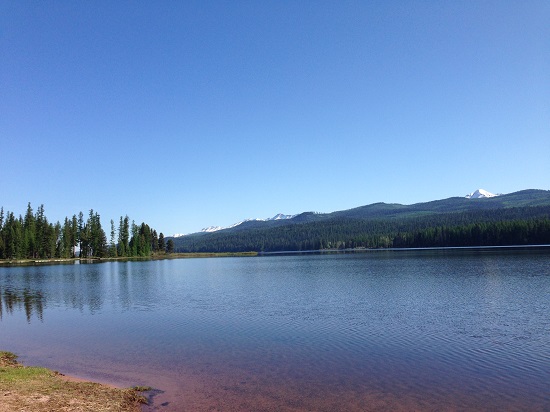The Collaborative Fuels Reduction and Restoration field trip was held during the Large Wildland Fires Conference in Missoula, MT, co-hosted by the Association for Fire Ecology and the International Association for Wildland Fire.
Forests that historically burned in mixed-severity fire regimes prove difficult to manage, especially when they border homes and prized recreation areas. This management challenge was the focus of the field trip, which included presentations by researchers, managers, residents, and other stakeholders who discussed challenges and successes with collaborative fuels reduction and restoration projects in mixed-conifer forests in the southwestern Crown of the Continent of western Montana.
Field Trip Stops
Girard Grove: old-growth western larch forest - Researchers and managers described their historical analysis, development of treatments, and efforts at securing stakeholder support in Girard Grove management. Treatments included selective overstory and midstory tree removal with understory thinning, prescribed fire, and duff removal from the bases of large old trees prone to cambial injury from fire.
Jocko Lakes fire -The Jocko Lakes fire was ignited by lightning near the district boundary with the Mission Mountain Tribal Wilderness on the Flathead Reservation and the Seeley Lake Ranger District. The fire spread rapidly toward Seeley Lake through tribal, state, federal, and private land. More than half of the total burned area burned at high severity. Managers and stakeholders shared their lessons learned during the incident and with postfire management in this multijurisdictional area.
Colt Summit Project - Researchers, managers, and community leaders shared the challenges and concerns related to the development of the Colt Summit restoration project, which proposed active management to restore multi-story forest structure, improve wildlife habitat, and treat fuels in the wildland urban interface on the Seeley Ranger District. After conducting Environmental Assessments and responding to stakeholder appeals, the 2,000-acre fuel treatment and restoration project was approved in April 2014, nearly five years after its proposal in 2010.
